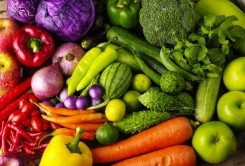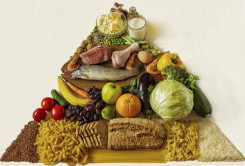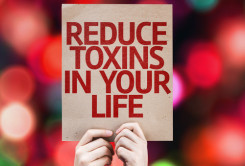Brenda Watson's Blog, page 2
April 22, 2016
Are You a Dog-Kisser?

I really enjoyed sharing information about pet supplementation in a recent episode of Pet Talk on National Geographic Wild. I was featured in a segment on Episode 3 that originally aired March 4th. I believe it’s still available for viewing, and I think you’d really enjoy it, especially if you’re an animal lover like me. Interesting information about many different animal species.
Shortly after the filming I came across an article in the Wall Street Journal named “Burning Question: Can Kissing Your Dog Make You Sick?” I had to laugh because one of the companion segments on the Pet Talk episode addressed exactly the same situation.
Doris and her boyfriend Mark were the guests in the dog-kissing segment along with Doris’ two dogs, Buddy and Miss B. According to Doris, Miss B “is the best kisser in the whole wide world”. I must say I had never considered kissing a dog with the open mouthed intensity that Doris demonstrated. Mark had reached a point where he was no longer interested in kissing Doris (imagine that!). However Doris states that the unconditional love she receives from her canine friends “makes her day worth living”. It was certainly a thought provoking stalemate, and it was also interesting to see the reactions that Doris’ exuberant kissing created on the faces of the hosts of the show and also the audience. It’s probably the same face you have right now.
Bacterial swabs were taken from the throats of both Doris and Mark to determine if there was any harmful bacteria growing there that might have originated from the dogs. Although no disease-causing pathogenic bacteria were detected, Doris’ swab did reveal a type of bacteria that is not normally found in the mouth. Instead that particular bacteria is generally found only in the intestine. Although there was no way to prove it, the general consensus seemed to be that the bacteria was transferred to Doris from one of the dog’s mouths after they licked their own feces (dogs do like to clean all areas!) and then found it’s way into Doris’ mouth from a very affectionate kiss. Eeek!
Another true story was shared with the audience about a roundworm found in a different dog-kissing person. It seems the larvae of the worm traveled up into the lung of the dog, was coughed up into the dog’s mouth and then transferred to the human through a smooch.
I’m thinking perhaps open mouth kissing might be best avoided with our four legged friends! What do you think?
A good awareness point that was made in the WSJ article is to be sure and wash your hands after throwing a ball for your dog, as the saliva could be transferred from your hands onto your face and perhaps contain bacteria best avoided.
Additionally, it’s possible that sleeping with your dog could transfer fleas or other infection. However if you have a healthy dog that is currently maintained on flea and tick meds regularly, your risk is very low.
There is no one who loves dogs more than I do on this planet, so I totally understand the occasional kisses and close contact. Ultimately, simple washing with soap and water after you may have received that affectionate lick will generally eliminate contamination. However, please don’t allow your pet to lick an open wound. The potential there is for a parasite or germ to sneak directly into your bloodstream.
I’m looking forward to filming more segments of Pet Talk in the upcoming year. Please keep an eye out and let me know how you like them!
April 15, 2016
Red Wine for Heart Health?

Reducing your risk of heart disease may have just become a bit more fun. A new study done by researchers from China explores the actual mechanism of how a compound found in red wine, resveratrol, may reduce the risk of heart disease.
Resveratrol, found in peanuts, grapes, red wine and some berries has been touted as a health promoting substance, which supports cardiovascular health and infers anti-atherosclerotic benefits. However understanding exactly how that takes place has been murky and debated.
This study has uncovered evidence that the protective effect of resveratrol actually closely involves the gut microbiome – the extensive community of microbes that inhabit the digestive system of each of us.
Specifically, it seems resveratrol is able to inhibit gut bacteria from creating a compound called TMA. TMA is required to produce TMAO – an inflammatory compound well known to contribute to the development of atherosclerosis. The concept is that the less TMA produced = less atherosclerosis in your blood vessels = better cardiovascular health!
In my book Skinny Gut Diet we actually conducted our own small research project on gut bacteria right here in sunny Florida. We observed that when people in our group increased their ratio of Bacteroidetes (we called these the “Be Skinny” bacteria) to Firmicutes (our nickname was “Fat” bacteria) by shifting their eating habits and using digestive supplementation, weight reduction was the happy result. We used comparative Comprehensive Stool Analysis testing to measure the shifting bacterial ratios over time.
In the recent study I mentioned above, the principal investigator Dr. Man-tian Mi said, and I quote “we found that resveratrol can remodel the gut microbiota including increasing the Bacteroidetes-to-Firmicutes ratios, significantly inhibiting the growth of Prevotella, and increasing the abundance of Bacterioides, Lactobacillus, Bifidobacterium, and Akkermansia in mice.”
Stay with me here, please. Essentially Dr. Mi is telling us that resveratrol helps to rebalance the ‘good guy-to-bad guy ratio’ of different bacterial species in the gut. The Chinese study was focused on the ratio of different species of bacteria as they related to cardiovascular disease specifically.
In Skinny Gut Diet, we were looking more at bacterial ratios and their impact on obesity and weight loss. Certainly obesity and heart disease sadly go hand in hand. Any food or substance that will lessen obesity is sure to improve cardiovascular health. Bottom line – substances like resveratrol, healthful diet and probiotics that positively impact your microbiome have the greatest potential to protect your health.
I never tire of reading innovative studies from around the world that deepen my understanding of how those helpful probiotics we have in our bellies function. From China to Florida, our research agrees. Heal your gut, heal your body – and in this case, your heart.
April 8, 2016
Produce Easy Produce

Today is a day for inspiration! I’m happy to share some really uplifting and heart-opening information with you about great things happening in the world of gardening.
In the resort town of Jackson, Wyoming two visionary women are creating not only a wonderful opportunity for the town but also a very large amount of organic produce. Veggies are a personal favorite of mine, as you know!
This exciting project began eight years ago when Penny McBride and Nona Yehia met at a party. Over time, the business Vertical Harvest was co-created.
Vertical Harvest uses hydroponic farming methods to grow various veggies in the harsh Wyoming winters, and all year round. The greenhouse itself is a three-story structure that has been constructed on a 4,500 square-foot downtown lot. Central to this greenhouse’s ability to produce a bounty of veggies is their use of the relatively new practice called vertical farming.
Construction presented some unforeseen issues, as always seems to happen when new designs are introduced. Overall, after much discussion with the town council and governmental agencies, it’s so wonderful to know that by early May greens will be growing and soon thereafter, the bountiful harvest will be sold to local grocery stores, restaurants and also in a retail shop. The perfect additional piece to this story is that the customized employment model chosen allows for 15 people with disabilities to work and be truly productive. What a worthwhile endeavor!
Of course, hydroponic growing is nothing new to Walt Disney World in Orlando, Florida. It’s astounding to tour the Land Pavilion there and see firsthand the gardens they’ve created and the food they constantly produce. Besides providing vegetables for the restaurants on site, there is ongoing research into vegetable species and growing practices and also wonderful opportunities available for those passionate about growing to intern in this fascinating place.
I clearly understand the value and joy of hydroponic gardening. I’ve been involved with two different systems myself for a number of years now.
Our biggest producer is this stackable vertical system, which uses coconut coir (instead of dirt) to stabilize the root system. The nutrient solution is provided to the plants a few times daily through a timer system. Next weekend we’re moving it to Vital Planet Company Headquarters so everyone here can enjoy the grow experience, and the yummy veggies. We’ll just walk outside and pick our salad for lunch!
We also have a Tower Garden. It’s a different type of system that allows the roots of the various plants to hang in midair. The roots are misted regularly throughout the day and night. This particular system was invented by a gentleman who had previously managed the hydroponic gardens at Disney. The plants are so vibrant and the root system so interesting that we’ve even used them as centerpieces at big events in the past.
Hydroponic growing insures that the plants are getting the nutrition they need to provide optimal vibrancy, and secondarily, the best nutrition for us. The phrase “Beyond Organic” has been used. That’s really a blessing for us, considering the soil here in Florida is mostly sand. And I must say, our hydroponic veggies are extremely delicious and beautiful!
Recently I came across a different type of tower system, which I’m sure at some point in the future we’ll try too. To me, the most appealing aspect of this grow system is sustainability. It seems to require little maintenance and makes use of worms and your kitchen scraps to create compost and self-fertilize. And no electricity is required!
So if you find any of this information interesting, I encourage you to go for it! It’s a truly wonderful experience for the family to walk outside and gather dinner from your own patio or backyard – even right in the city!
April 1, 2016
Veggie Variety = Gut Diversity

Over the last decade, a tremendous amount of research has been directed toward examining the family of bacteria and microbes we host in our digestive system known as the microbiome. From the multi-pronged Human Microbiome Project funded by the National Institutes of Health to the American Gut Project, the largest crowd sourced citizen science projects to date, valuable information is being gathered daily. You can even join the American Gut Project and learn what’s in your own gut.
Recently I came across an article in Science Daily discussing how our farming practices over the last 50 years have impacted our microbiome.
The prevalent research shows that the more diverse the bacteria in your gut are, the healthier you tend to be. And the more different types of plants you eat, the higher your gut microbiome diversity, also known as microbiotic richness. We’re right back to “eat your vegetables!” aren’t we? Grandma knew what she was talking about!
Sadly, our farming practices have been working against our microbiome by decreasing the numbers of crops that are regularly produced. And then many of us simply buy for our families what is in the grocery store that looks the nicest up front. We may buy the same vegetables year after year, believing we’re eating very well.
Today I’d ask you to consider the fact that many of our chronic diseases like type 2 diabetes, obesity and inflammatory bowel disease are directly associated with reduced microbiotic richness and therefore lack of diversity in the foods we choose to eat.
Believe me, I understand how it is. In our fast paced world we tend to grab our food as we go, and often find ourselves set in habitual patterns. We also may be following a particular dietary regimen and attempt to remain within strict guidelines. The good news is most dietary programs enthusiastically encourage eating as many veggies as you choose!
It does takes a plan and a bit of preparation time to gather good foods together in our crazy world. And it’s so worth it in the end. When you care for your microbiome, you’re supporting the very core of your health and happiness.
So today I’d like to encourage you to take a quick review of your vegetable eating habits. Think of something you haven’t eaten in a while like maybe parsley? Arugula? Red cabbage? Watercress? Sprouts? Edible flowers? Check out your local farmer’s market or maybe an oriental market for new ideas.
In Skinny Gut Diet I suggest having at least one fermented food daily. Fermented veggies of all types are extremely delicious, simple to make and come jam-packed with their own communities of gut-loving probiotics. Doesn’t get any better than that! A win for both your microbiome and your palate. Experiment!
What’s the most unusual veggie you’ve eaten lately? I’d like to hear from you!
March 25, 2016
Thinking With Your Gut

If you’ve been feeling emotionally taxed (pun intended – yes, this is the season) and/or mentally foggy, I have a suggestion for you. Increase your intake of fermented foods containing those good bacteria, probiotics.
Recently I interviewed Dr. Emeran Mayer for my upcoming television special, Natural Breakthroughs with Brenda Watson. Dr. Mayer is professor of medicine at UCLA, a specialist in gastroenterology and is the director of the UCLA Centre for the Neurobiology of Stress. He has written several books that explore the brain-gut connection and in fact has a new book coming out in July that combines cutting-edge neuroscience with the latest discoveries on the human microbiome.
I wanted to share the results of a study that Dr. Mayer and his team conducted with 36 healthy women that may take the edge off your day. He divided the women into 3 groups that committed to drinking a specific beverage twice a day for four weeks. One group drank milk fermented with probiotics, the second drank milk without probiotics, and the third drank a non-milk product.
The women agreed to undergo functional magnetic resonance imaging of their brains before and after the four-week period. The test results of the group drinking the fermented milk positively affected the activity of brain regions that control the central processing of emotion, sensation and even task completion, compared to the other two groups. That’s certainly a direct gut-brain connection. And a calming and productive one at that!
Eating fermented foods on a daily basis is a core concept in the Skinny Gut Diet. Fermentation educator Donna Schwenk joined us during the filming of that public television special, and shared many simple recipes. Milk can easily be fermented to create kefir, a food that naturally offers a rich diversity of probiotic species. Kefir can be enjoyed as a beverage, or included as an ingredient of a wide array of other delicious treats, from ice cream to salad dressing to smoothies.
Fermented vegetables are my personal favorite. Although cabbage is certainly a versatile crowd favorite, I really enjoy culturing different veggies like asparagus, broccoli and carrots. Through the ages, fermenting has been used around the globe to extend the life of foods, and without direct awareness at the time, people’s lives were improved too. There are even some great tools that make fermenting easier than you can imagine, and great fun too!
Although some people in our germ-phobic society may be worried about the safety of fermenting, when we ferment produce whether we use salt or a starter culture, the probiotic lactobacilli predominate, crowding out potential bad guys in the process. It’s interesting to note that improperly washed raw veggies out of our gardens or from the store can actually contain harmful microbes and can potentially create more issues than their fermented counterparts.
Adding more probiotics in any form into your daily routine is a sure winner – for a healthier gut and a sharper brain!
March 18, 2016
BFF – Your Liver!

In terms of your health, one of your very best friends is your liver. It works tirelessly for you, performing myriad critical functions, keeping your body pure of toxins and harmful substances. It supports nearly every other organ in the body in some way.
We are all besieged daily by various substances that are foreign to normal body function. Pesticides, petrochemicals, plastics – and I’ve just mentioned a few that begin with “p”. Sadly, there are certainly toxins that begin with all of the other letters of the alphabet as well.
I was reading an article discussing a paper published in the European Journal of Medicinal Chemistry. It stated that more than 10 percent of the world’s population suffers from some form of liver disease. It also mentioned that many of these people choose natural remedies instead of pharmaceuticals as their therapy. Glad to hear that.
Liver cleansing is near and dear to my heart and I’ve been using herbal formulations for decades to support healthy liver function. What’s really remarkable about these herbs is that they are time and tradition tested across our globe, and found to be safe and effective, without the harmful side effects that we regularly encounter with man-made chemical medications.
So now let’s celebrate some natural herbs that can provide you with protection against liver cancer and various other forms of liver damage. Yes, there is a lot you can do to safeguard this essential ally of your health.
Turmeric, whose active ingredient is curcumin, has been extensively used in traditional Asian medicine to treat gut issues, arthritis, and low-energy or fatigue. It demonstrates anti-inflammatory, antioxidant, and anti-cancer properties. No wonder it gets such great press as one of !
Skullcap, active ingredient wogonin, has shown positive results in studies relating to Hepatitis B and C, as well as various forms of alcoholic and non-alcoholic fatty liver disease. Interestingly, it has also been used in the treatment of a wide variety of nervous conditions, including epilepsy, insomnia, and anxiety.
Licorice Root, active ingredient glycyrrhizin, exhibits powerful anti-inflammatory and anti-viral properties. In Chinese medicine licorice root has long been used to protect liver function and also to combat tumors, and is widely recognized as a go-to support in cases of chronic hepatitis.
Resveratrol is known widely for it’s anti-aging properties. It’s not surprising that it also protects the liver, helping to guard against the damage caused by free radicals and inflammatory processes. Resveratrol elevates levels of glutathione and promotes antioxidants in the body. It shines as a great liver-supporting herb.
Milk Thistle, active compound silymarin, is probably the most well researched supportive herb for the liver. Used medicinally for over 2,000 years and appreciated as a strong “liver tonic” worldwide, it is used extensively in preventing and even reversing liver toxicity caused by toxins and drugs. And if you heard that milk thistle should be avoided due to its possible effect on estrogen, disregard that information. Although some parts of the plant contain phytoestrogens, clinical evidence shows no significant effects on estrogen levels, and in fact is potentially beneficial for estrogen dominant conditions such as breast cancer.
There are many excellent liver cleanse formulas that contain most if not all of these fine herbs. As I discuss in my book, Gut Solutions, a liver cleanse is recommended for everyone. Always remember – Good Liver, Great Life!
March 11, 2016
Bacteria or Virus? Express Yourself!

As this year’s flu and cold season wanes down a bit, I found it heartening to read that science is focusing on a way to distinguish between bacterial and viral infections to help limit over-prescribing of antibiotics. Over the last decades doctors have been far too willing to offer a sad and miserable patient antibiotics, resulting in killing off many of the body’s good bacteria and creating serious bacterial imbalance in their gut!
Antibiotic overuse has also created a global issue termed “antibiotic resistance” where the bad bugs appear to get stronger the more often they are exposed to antibiotics. Research shows these “superbugs” become invulnerable to our current antibiotics creating the potential for more virulent diseases – and that’s another story.
This article from the Wall Street Journal states that nearly 75% of acute respiratory illnesses are viral in nature – and there’s currently no prescribed treatment for a viral infection. Dr Ganiats, a family physician and professor at the University of Miami states “Its often hard to get a person who doesn’t need an antibiotic to accept that.” He believes testing that differentiates bacteria from virus would be very helpful.
The Duke University research is doing just that. It’s designing a blood test to determine whether a respiratory infection is viral or bacterial in nature. At this point, it’s only a research tool, and has an 8-10 hour turn-around time. The hope is to develop a 1-hour blood test that could be used in the doctor’s office. However that test is still 2-3 years away from arriving on the market.
The research focuses on how our body’s genes respond differently to bacteria or viruses. This response called gene expression will turn genes on or off depending on the type of infection present. The study follows how the genes express in the absence of infection as well. Testing genes is believed to offer more dependable results than other types of tests currently available.
In a study using a cohort of 273 that was published last month in the journal Science Translational Medicine, this test was found to be 87% accurate. It was able to differentiate whether the patient had a viral or bacterial infection, or actually was ill due to something other than an infection.
Interesting point to note, sinus issues very commonly indicate an underlying yeast/Candida infection.
Honestly, at the first onset of respiratory symptoms, I would be inclined to max out on probiotics, Vitamin C, along with immune stimulating herbs and ride it out as long as possible and appropriate.
And I realize not everyone has the health convictions I do. No matter what direction your personal choice for healing may lead you, it’s always helpful to understand the underlying issues so we can address them effectively. I’m looking forward to more of this type of testing to be available for all of us.
Please do me a favor – think twice, maybe three times before you decide on an antibiotic. Your gut and also the rest of the world will appreciate your consideration.
March 4, 2016
Food Pyramid Reconsidered

A few weeks ago while working on the newsletter about the FDA Guidelines, I came across this article from the Wall Street Journal co-authored by Dr. Stephen Nissen, chairman of the department of cardiovascular medicine at Cleveland Clinic. I’d like to share a quote from the article with you. “Congress, concerned about the continued toll taken by nutrition-related diseases, recently mandated the first-ever outside review of the evidence underlying the dietary guidelines and the process that produces them. The National Academy of Medicine will conduct the review this year. Yet this effort could do more harm than good if the academy endorses the weak science that has shaped the guidelines for decades.”
This excellent article goes on to explain that many of the recommendations which were first issued in 1980 were not based on clinical trials – one of the most reliable ways to show a cause-and-effect relationship. A major issue with clinical trials is human nature itself. We humans don’t like to follow rules.
In a laboratory setting with mice, foods can be administered regularly and changes in weight and various other parameters can be tracked accurately. However, imagine being a part of a study and being required to eat a certain way for weeks, months or even years. I’m sure you’re saying – “no way!” or “they’d have to pay me a fortune to do that!” And there you see the issues. To monitor the subjects as closely as would be required (think cameras in the house and car – and what about work?), or to provide all the food a subject should eat would cost a fortune! We’re not lab mice, after all.
Of course the results would also need to be recorded. Anyone who has ever attempted to maintain a diet diary can attest to how difficult following a specific eating plan can be! I would greatly encourage you to read the WSJ article.
So how were those guidelines assembled in the first place? It’s called prospective epidemiology. That’s a fancy way of describing the process of sending out lots and lots of questionnaires to large groups of people, asking questions about diet and lifestyle, and then following up with more questionnaires over years. If you’ve ever answered questionnaires, you know how variable your answers can be depending on your mood, or even the time of day. At best, the results of this type of study are sketchy.
Its no wonder dietary advice has vacillated so wildly over the last decades. Avoid eggs, eat eggs. Eat a low-fat diet, eat a high-fat diet. Eat more carbs, eat less carbs. The contradictions can make you crazy. And in our country the result has been a population of overweight people with cardiovascular disease and blood sugar issues.
According to this article, way back in 1980 the scientists should have realized that the recommendation to cut fat was unsound, based on already conducted contrary studies. Which of course brings us to the ever-present big money interests in agriculture and marketing. Sadly, money seems to trump health once again
So I have a question for you. Why are we waiting on the government to tell us what to eat anyway? There are certain basic concepts that aren’t rocket science that can guide the food decisions we make. In Skinny Gut Diet, besides offering a sensible healthy eating plan I’ve focused on a very basic concept – don’t eat lots of sugar! It makes you sick and fat! Simple. Doesn’t take Dietary Guidelines for that one!
Bottom line – we are each unique and wonderful individuals. There is no one eating plan that is a perfect fit for everyone. Each person who offers dietary guidance, be it Dr. Nissen or me, organizes their own research and life experience in order to make healthful suggestions. Now it’s time for the American public to do the same. Do your own research and listen to your gut – and I mean that literally.
February 26, 2016
Toxic Heart, Toxic Body

As American Heart Month 2016 winds down, I’d like to shift my focus to an area that we don’t always associate with heart issues – toxins. Toxins are everywhere; there is no doubt about it. In the air we breathe, in the water we drink, in the food we eat, in our homes, in most products we use—even in the most pristine places on earth—toxins are there. Truth is, toxin accumulation can directly impact our cardiovascular system, and many times will manifest as high blood pressure, increased atherosclerosis, and ultimately heart issues.
Toxins are chemicals that interfere with normal functions in the body, and most have been associated with adverse health effects. At this point, the Centers for Disease Control (CDC) regularly measure over 200 toxic compounds, tracking the levels in different aspects of our population. However there are 80,000 chemicals currently in use! Although the CDC adds new chemicals to track annually, it’s simple to see that we will never be able to really understand the full impact of the substances we’re all exposed to. The sad fact is many chemicals contribute to cardiovascular disease – either directly, or indirectly – through an increase in oxidative stress and general systemic inflammation.
So what is oxidative stress, also known as oxidation anyhow? It is one of the main drivers of inflammation in the body. Inflammation is at the root cause of heart disease, and for that matter, all other chronic disease as well.
Consider this analogy illustrating the destructive properties of oxidation: Oxidation is like a punch thrown from a bully (the oxidant), and it can easily lead to a full-blown fight if enough molecules get involved. Destruction results. Oxidation occurs when there are not enough antioxidants (the peacekeepers) around.
Oxidative stress triggers inflammation and regarding cardiovascular issues, it initiates the destruction of the lining of the blood vessels, called endothelial dysfunction.
Atherosclerosis involves endothelial dysfunction and chronic inflammation in the artery walls, progressing to the buildup of plaque and eventual cardiac complications such as heart attack and stroke. So I’m sure you can clearly see how toxins that increase oxidative stress are definitely the enemy. And antioxidants are our friends.
It is a myth that nothing can be done about toxin exposure. The fact of the matter is that supporting the body’s seven channels of elimination – colon, liver, lungs, lymph, kidneys, skin, and blood – through diet and cleansing will help improve the body’s natural detoxification abilities. A healthy eating plan and cleansing routine will fortify your heart right along with every other part of your body.
In addition to the antioxidants your body naturally produces, you also obtain antioxidants from your diet. A diet high in antioxidants includes plenty of deeply colored fruits and vegetables. This important step helps decrease oxidative stress and general systemic inflammation.
Regular exercise stimulates sweating and the release of toxins from your skin. Different herbal formulas help support the organs of elimination. Next month I plan to discuss cleansing in more detail.
In my book, Heart of Perfect Health, I offer information and targeted programs designed to protect your heart for the rest of your life. Toxins may be all around us, but we have ways to release them – and renew our health.
February 19, 2016
Can Clutter Up My Weight?

February seems to bring out the organizing, aligning, revising side of my personality. Maybe it’s the new year, or maybe it’s the coming of spring – I’m just ready to clear the clutter and move forward!
Even in the midst of chaos, the kitchen has always been one place I strive to maintain clean and clear. I was very interested to read this report conducted by the Cornell Food and Brand Lab on the value of an uncluttered kitchen.
In the final analysis it seems that clutter in the kitchen fuels an out of control mindset, and triggers indulging in snacks and comfort food (in this report, cookies).
With that in mind, I thought I’d offer some tips on clearing your kitchen environment and prepping for successful snacks. As we called these types of concepts in Skinny Gut Diet – Power Tools!
First, if your kitchen is cluttered, it could be your cabinets are so full that extra objects have to sit on your counter because they have nowhere else to go. Scan through your cabinets one at a time and lessen the load. Box up the stuff you never use, and move the once or twice a year plates, pots or appliances to a higher, less trafficked shelf. This will help get objects off the counter and out of sight. Ahhh…
A small basket might do the trick for the paperwork that tends to piles up. If you live with others, possibly designate a place where everyone’s homeless mystery items might be placed until they are put in their proper location.
Next let’s organize the kind of snacks that support your clear minded goals. The value of allotting some time on the weekend to plan your weekly snacks cannot be over-emphasized!
Since eating at least an ounce of protein every 2-3 hours helps to balance your blood sugar and eliminate cravings, easy-to-grab protein snacks make things simple.
Roll-ups are a favorite at my house. Sliced proteins like turkey or ham and cheese, with a slice of pickle, a bit of sauerkraut, mustard, a slice of avocado or red pepper in the middle are very satisfying. Sometimes we roll them in a veggie leaf. For clean fingers, cover them with a paper towel and store in a plastic bag, a few at a time.
Pre-measuring single serve packets of almonds or sunflower seeds is a great strategy when you’re on the go. Tip – beware of carrying full canisters of nuts with you. Although nuts can be great snacks, overindulgence in these foods will demolish your low carb eating plan. Remember – nuts and seeds have as many carbs as they do protein in most cases.
Please believe me, the time it takes to pre-prepare your protein snacks (and lunches too) will pay off happily as your cravings cease, your blood sugar stabilizes, and your unwanted pounds shed.
And for a natural boost to your mindset, explore and enjoy lots of fermented foods, from pickles to kefir to sauerkraut to kimchi. According to research, those good bacteria just may balance your mood, helping you remain calm and collected in the midst of a day that may not resemble your clean and tidy kitchen at all!
Clutter – be gone! And let healthy snacks take your place!



